You’d Be Home Now: Q & A with Kathleen Glasgow
You’d Be Home Now (Delacorte Press, September 28, 2021) is already a STAR. Kirkus calls the latest novel by bestselling author Kathleen Glasgow “A gut-wrenching look at how addiction affects a family and a town,” and “Necessary, important, honest, loving, and true.” Also praised by Booklist, and School Library Journal, this fantastic find according to Shondaland is at the top of my TBR list. I devoured Glasgow’s first two novels, Girl in Pieces and How to Make Friends with the Dark, and am especially excited for her latest work (which, for better or worse, makes me think of my own childhood). I have no doubt it will resonate with young adults and not so young readers alike. Here’s a brief description of You’d Be Home Now:
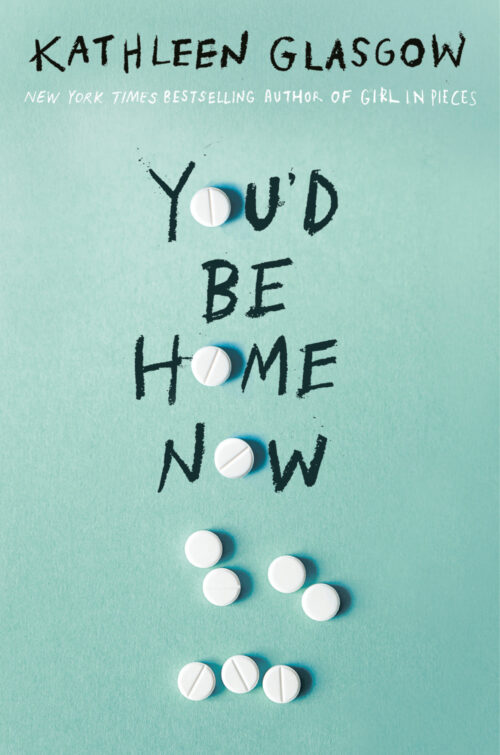 No one knew just how bad Joey Ward’s addiction was until the night Candy MontClaire died. Four months later, he’s back from rehab, hoping for a fresh start in a town that doesn’t know how to forgive. His sister, Emory, is tasked as his keeper. Because in a family with a “beautiful one” (her glamorous and outgoing older sister Maddie) and a “bad one” (Joey), Emmy has always been “the good one.” Of course she’ll keep her brother safe. She loves Joey more than anything. She’ll do anything to keep him alive.
No one knew just how bad Joey Ward’s addiction was until the night Candy MontClaire died. Four months later, he’s back from rehab, hoping for a fresh start in a town that doesn’t know how to forgive. His sister, Emory, is tasked as his keeper. Because in a family with a “beautiful one” (her glamorous and outgoing older sister Maddie) and a “bad one” (Joey), Emmy has always been “the good one.” Of course she’ll keep her brother safe. She loves Joey more than anything. She’ll do anything to keep him alive.
But what if love isn’t enough to save someone?
Glasgow was kind enough to do an email Q & A for my blog. Read on to learn more about her latest novel and her writing life.
What was the spark for You’d Be Home Now? And did you know from the get-go you wanted—or had to—write about a teen girl tasked with picking up the pieces after her brother’s drug addiction?
You’d Be Home Now was inspired by Thornton Wilder’s classic play, Our Town. It’s a loose reimagining of Grover’s Corners and what a town like that might be like today. If Wilder wrote the play today, I have no doubt the opioid crisis would be part of the plot, as this epidemic has ravaged families, towns, and communities. I chose to write the book from Emmy’s POV because there’s collateral damage in addiction: families, particularly siblings, who often become overlooked, overwhelmed, and exhausted in the face of a sibling’s addiction. The impact of addiction touches everyone in a family and really does a number on their mental health. They deserve a story, too.
I’m intrigued by the idea of examining who we are and what role we play within our families and our communities, and how that impacts our relationships and self-perception. I, for example, have always been a rule-follower who sought others’ approval, and who was always considered to be ‘the good one.” My older brother who was frequently in trouble was deemed “the bad one.” (We’ve been estranged for more than 15 years, and obviously haven’t worked through those narratives—maybe someday?!) What made you want to explore this idea in your novel, and did you have any revelations (in general or about your own life) along the way?
Everyone, for better or for worse, gets slotted into a role in a family: “the good one,” “the troubled one,” “the beautiful one,” “the difficult one.” It’s endless. But it’s not who each kid is, it’s who they are being defined as, and that’s not fair to any of them, because it makes them suppress emotions and not feel comfortable moving out of the role they’ve been assigned, if that makes sense. In YOU’D BE HOME NOW, Emmy is “the good one.” Quiet, rule-follower, caretaker of Joey since she was very small. In essence, because of this role, she’s never really discovered who she really is, or what she really wants out of life, or even how to get it. She doesn’t have an identity she forged on her own; it was given to her by her family. And of course, she wants to help her brother. But at what cost? She also wants to live a life of small, normal joys, like having a boyfriend, or going to dance. Those things make her feel guilty, though, because how can she enjoy herself while her brother’s life is disintegrating? I tried to be very careful in the book about Emmy’s journey with Joey, because she’s at the very beginning of this struggle with Joey, and many people (especially older readers) have reached a sort of end with the Joeys in their lives: they can no longer give all they’ve got; they’re exhausted. And that is valid! The question is learning to set your boundaries: what you can do, what you can’t do, because in the end, you also have to take care of yourself. It’s Emmy’s struggle in the book to realize this. I wanted to show the process of taking care of yourself, too. And to stop assigning people roles that don’t actually define who they are.
How was the process of writing this third novel different from that for Girl in Pieces, and How to Make Friends with the Dark?
Well, it was very hard to write with Thornton Wilder in the room! But I eventually overcame that, because the story became its own. I would say writing this book was different because Girl in Pieces and How to Make Friends with the Dark are pure emotion—Charlie and Tiger’s POVs are very interior and heavy. I needed to make Emmy’s narrative somewhat less intense than my other books to stretch the story beyond Emmy and into the town and the school to show how the tentacles of addiction ensnare everyone, not just the person struggling with addiction. An Instagram poster in the book called Mis_Educated is a character in the book and through their posts, a reader also gets a chance to hear from kids in the town of Mill Haven (in the comment section) about what’s really happening and how they feel about their lives.
How has the pandemic changed your writing life in terms of practices and inspiration?
I don’t know if the pandemic has changed my writing practice or inspiration so much as it has changed me, slowly, over time. I’m already an introvert and being even more isolated during the pandemic led me back into a deep depression. I wasn’t writing at all for several months, actually, until a joke between me and fellow author Liz Lawson (The Lucky Ones) turned into . . . a book. I needed something fun and different, I needed something to look forward to every day, and so did Liz, and those Twitter DMs between us eventually turned into a mystery called The Agathas, which comes out May 2022. Writing that book quietly with Liz, with no one watching (we didn’t tell our agents for a long time), really lifted me to a better place. And it’s a different tone of book for us, as both Liz and I tend toward heavier topics. We kept everything speedy, and fun, and about friendship (two teen girls become unlikely detectives and even more unlikely, become friends) and it was really a balm for me.
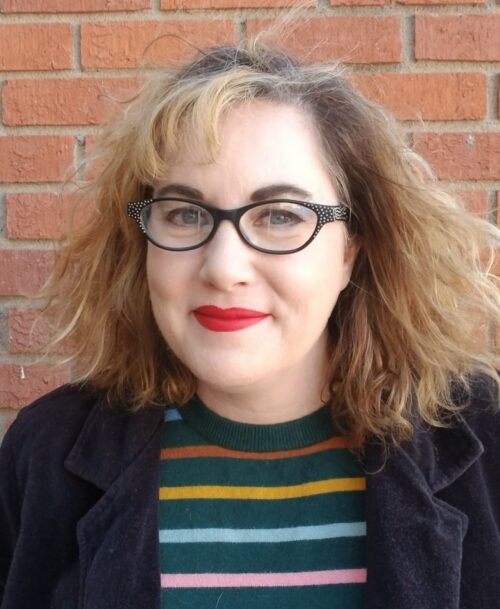 What has been the most rewarding part of being a young adult novelist? What has been the most challenging part?
What has been the most rewarding part of being a young adult novelist? What has been the most challenging part?
It’s rewarding in the sense that I hear every day from readers who have discovered Girl in Pieces and How to Make Friends with the Dark that those books have touched them deeply. I can’t really articulate what it means to know your book has impacted someone’s life in a deep and meaningful way. It makes me want to cry, actually! I’m grateful for that interaction. Writing is often hard and lonely, and sometimes you just don’t know if the story will land, especially with teens. I would say a challenging part is trying to do my best by teen readers and to articulate the adolescent experience in an authentic and believable way. And to give them a good and satisfying story to read.
What advice (in terms of craft or process) do you have for writers just starting out?
I don’t know if I’m an expert on anything having to do with writing, actually! I just try and write when I can, when a story keeps nudging me and won’t quit. I think in practical terms of craft, reading widely and often is the best teacher. You can learn from re-reading books you love: how the author structured this, how they handled that, how they went from A to B. I will say that you’ll learn what works for you in the beginning and then as you continue to write, you’ll improve through practice. I think the hardest thing for beginning writers is how to start. Like, literally, how to find time to sit in a chair (or couch, or bed, or coffee shop) and . . . get those first few words down. There’s a real fear: who am I to call myself a writer? Well, if you write, you’re a writer! And there’s a fear of: what if this isn’t any good? My answer to that is: what is good? One person might like your story, one might not. You can’t control that. But the most important thing to remember is, those things are abstract in the beginning: if you don’t sit down and write that story, no one will be able to read it. And believe me, someone wants to! Of that, I’m sure. We writers have a hard time getting out of our own way! We can imagine a million things might happen after we write a story and send it into the world, but if we don’t write it first, we will never know if any of those million things come to fruition.
What books, TV shows, and music have you most enjoyed during the pandemic (and more recently)?
I tend to have the television on in the background when I write and I wrote the entirety of You’d Be Home Now with Grey’s Anatomy on an endless loop. The shows I watched in the past two and half years when I WASN’T writing include (and I’m sorry on some of these because often it takes me years to watch a show everyone watched fifteen years ago): Game of Thrones, Mad Men, The Wilds, The Sopranos (could not finish, too many dream sequences), The Wire, 30 Rock, The Crown, Breaking Bad, Big Mouth, Forensic Files, Cold Cases, PEN15, Broadchurch. Some of my favorite books to read this past year were: The Lucky Ones (Liz Lawson); Never Saw You Coming (Erin Hahn); Something Happened to Ali Greenleaf (Hayley Krischer); When We Were Strangers (Alex Richards); That Weekend (Kara Thomas); The Project (Courtney Summers); Off the Record (Camryn Garrett). That’s just a small list. My music listening is all over the place, but lately I can’t stop listening to a song by Bright Eyes called “At the Bottom of Everything.” A weird thing about me is that while I don’t listen to music AS I write, I actually can’t start physically writing a book until I have everything in my head AND I have found the song that kind of drives the story, and “At the Bottom of Everything” is the song that drives what I hope will be my fifth book. (Girl in Pieces was “Kamera” by Wilco; How to Make Friends with the Dark was “Sign of the Times” by Harry Styles; You’d Be Home Now was “Let You Down,” by NF).
You’re a master storyteller, especially because you manage to inject hope into all of your stories no matter how raw, emotional, and painful they may have been to write or read. What’s one thing you’ve learned through your life and/or writing—especially during these especially challenging times—that has helped you persevere and continue to push through and make your art?
Honestly, I don’t know what else I would do if I couldn’t write. It’s all I’ve ever wanted to be, a writer. And stories are what keep us all going, right? When do we ever not need a good story?
About Kathleen Glasgow: She is the New York Times bestselling author of Girl in Pieces, How to Make Friends with the Dark, You’d Be Home Now, and the upcoming The Agathas (with Liz Lawson) (Delacorte, May 2022). She received her undergraduate degree from the University of New Mexico and her MFA from the University of Minnesota. She lives in Tucson, Arizona.
Check out my previous Q & A with Kathleen Glasgow for the launch of How to Make Friends in the Dark. And learn more about Glasgow and her work on her website. Her wonderful work is available wherever books are sold.
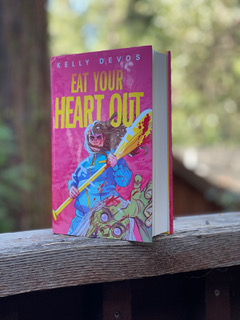 I’ve been following author Kelly DeVos’s career and enjoying her work and social media posts for years. I even had the pleasure of meeting the young adult writer at a pre-pandemic
I’ve been following author Kelly DeVos’s career and enjoying her work and social media posts for years. I even had the pleasure of meeting the young adult writer at a pre-pandemic 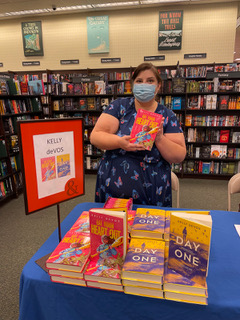 How has the pandemic impacted your writing, and how do you balance that with book promotion?
How has the pandemic impacted your writing, and how do you balance that with book promotion? 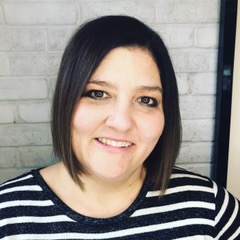 Kelly deVos is from Gilbert, Arizona, where she lives with her high school sweetheart husband, amazing teen daughter and superhero dog, Cocoa. She holds a B.A. in Creative Writing from Arizona State University. When not reading or writing, Kelly can typically be found with a mocha in hand, bingeing the latest TV shows and adding to her ever-growing sticker collection.
Kelly deVos is from Gilbert, Arizona, where she lives with her high school sweetheart husband, amazing teen daughter and superhero dog, Cocoa. She holds a B.A. in Creative Writing from Arizona State University. When not reading or writing, Kelly can typically be found with a mocha in hand, bingeing the latest TV shows and adding to her ever-growing sticker collection.
Recent Comments